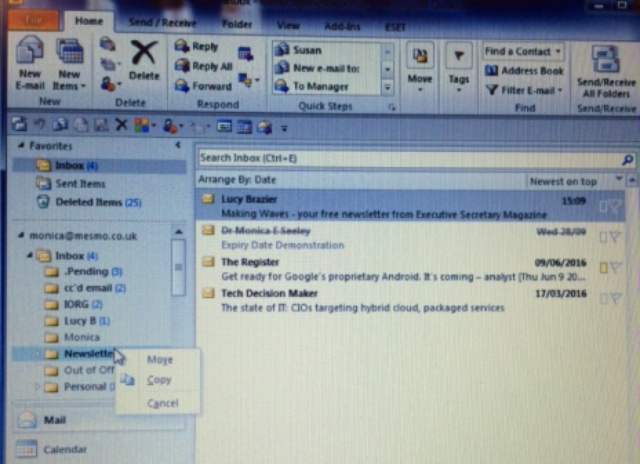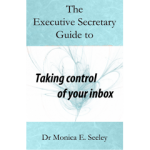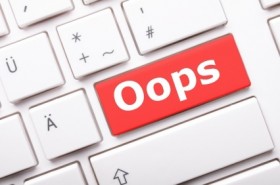It’s been an astonishing few weeks for email news. First, there was the Yahoo breach of security. Then the death of the Blackberry and now a survey from Adobe which revealed yet again just how email addiction is increasing and email response times decreasing.
1. Addicted to email. A recent survey from Adobe reveals that 45% of users check their email even in the bathroom. A frightening 17% still read them whilst driving and 57% check them in bed. Click here to check your own level of email addiction.
The survey also found that half the respondents expect a reply within one hour. This is twice as fast as five years ago, found in previous research from Mesmo Consultancy. Moreover our research revealed that it is usually internals’ who have such an expectation. External senders being prepared to wait longer. Little wonder many feel unable to switch off despite the known downsides of the always on culture.
Although this new study is based on USA respondents, it makes interesting reading and especially for any Director concerned with improving productivity and well-being of their employees.
2. Yahoo hacked. In late September Yahoo finally admitted that over half a billion user’s personal data had been compromised when Yahoo was targeted by hackers over two years ago. Two vital actions for all Yahoo users: first change your password. Second, consider switching to an alternative such as Gmail or Outlook.
3. Passwords are still the weakest link. Michael Chertoff, former head of US Homeland Security revealed that few people set strong passwords. Many default to simplistic ones which can easily be hacked. Click here for more on password management and how to set a secure password.
4. Are those personal apps a potential security threat to your company? Tech companies such as LinkedIn, MySpace and Dropbox have suffered major data breaches, with security research company Ponemon putting the average cost per breach at $4m (£3.2m), or $158 per stolen record. Whilst most organisations let you use these and other apps on your mobile device, Ponemon suggest others too such as Slack, Evernote and WhatsApp, may well be a potential security threat. Once your personal device has been hacked company data on them too can easily be leaked. Although most organisations have tight security policies and practices, getting people to apply them to their personal devices can be very hard as seen above.
5. Death of the Blackberry. That device which was heralded as the mother of improved productivity met its death in late September. Beloved by nearly as many as hated it. Responsible for more divorces than any other piece of modern technology and a nose dive in productivity and well-being should we mourn its passing or rejoice?
Although this new study is based on USA respondents, it makes interesting reading and especially for any Director concerned with improving productivity and well-being of their employees.
Tags: Blackberry, email addiction, email response times, Mesmo Consultancy, Password Management
How often do you look at an email and think hmm, this belongs in both folder A and B. Then you think, but will I remember which one it is in? Results, it just sits in the inbox. There is an easy solution. Make a copy and place it in both folders. Here is how for Outlook users.
1. Highlight the email in the usual way.
2. Hold down the right mouse button and drag it to the first folder of choice.
3. Release the right mouse button and from the drop down menu which appears choose ‘Copy’.
The original email remains in the inbox/original folder but now you have a copy in the other folder too.
One word of warning – if the email has a large attachment and you have a mailbox limit, make sure you remove it and save it outside your inbox. Otherwise you will very soon use up your valuable storage space.
For Gmail users, give the email two ‘Labels’ and move it to one of the corresponding folders. It will then be visible in both folders corresponding to those labels.
For more tips like this either see ‘Brilliant Email‘ or ask about Mesmo Consultancy’s Brilliant Email Masterclasses
Tags: Brilliant Email, Brilliant Email Masterclass, Copy an email, Email folder management, Mesmo Consultancy, One email - two folders, Outlook
 Here are five articles which caught our eye over the last few weeks. It’s a mixed bunch including the importance of checking your junk folder from time to time, what constitutes a strong password and how to improve office communications by placing more emphasis on the human aspect of work. Click here for more.
Here are five articles which caught our eye over the last few weeks. It’s a mixed bunch including the importance of checking your junk folder from time to time, what constitutes a strong password and how to improve office communications by placing more emphasis on the human aspect of work. Click here for more.
1. Always check your junk folder (carefully) – Australian author Helen Garner was almost $207,000 out of pocket recently, when an email telling her she had won a new prize went straight to her junk folder. She naturally thought is was a hoax.
2. Emails reveal trading behaviour during crisis. The Libor scandal erupted nearly five years ago and yet still email evidence is emerging about how traders manipulated the markets. Although largely related to the financial aspects of Citibank’s troubles, this article underpins two fundamental principles. First, you never know what happens to an email once it leaves your inbox. You only have control over what you say not who does what with it. Second, email is a picture of you, a point Barclays Bank found to their horror.
3. Working human: after all, what’s the alternative? We spend more time at work and isolated in our blinkered world of email and social media than ever before. Some companies are now looking at ways to make work more enjoyable and increase the level of personal contact. This overview includes case histories.
4. Better password? Pretend you eat kale. Did you know that password built around the ‘I eat kale’ is significantly stronger than one built on ‘I love you’. Here is why and how to build on that philosophy to develop your own strong and robust passwords. Click here for more tips on this setting strong passwords to reduce cyber crime.
5. After hours email checking consumes a month a year. A recent US survey found that we now spend at least one hour of our own time checking office emails. There is little doubt the same behaviour persist in the UK. Indeed the French Government are considering legislation to banning access to work email after work hours.
Many of the challenges highlighted in these articles contribute to corporate email overload and hence drain you and your organisation’s productivity.
You will find some advice and tips on how to reduce the email stress levels in both ‘Brilliant Email‘ and ‘Taking Control of Your Inbox‘. And Mesmo Consultancy can always come and run a Brilliant Email workshop to help you and your organisation improve performance.
Tags: After hours email, Brilliant Email, corporate email overload, cyber crime, Junk Folder, Mesmo Consultancy, Passwords, Taking Control of Your Inbox
The key is not to prioritise what’s on your schedule but to schedule your priorities.
Stephen Covey
You decided not to allow the arrival of each new email to distract you and instead deal with them in batches. What is the best way to manage your time when dealing with email is a question I am often asked. The most important decision is how much time to allocate before suffering email overload. Fifteen to sixty minutes is a good yardstick. Be ruthless and don’t just keep going, otherwise other important tasks will not be done.
You may need to make a meeting with yourself to deal with your email. If you have a day of meetings you will need to deal with them in the margins.
The key is to review and prioritise, based on the email’s subject-line, and decide what is either urgent or important and deal with
these first.
2. Pomodoro. Allocate a specific block of time which you then break up into smaller chunks, traditionally of 25 minutes.

Pomodoro – Email Overload Time Management
(Smaller chunks also work.) Take a five minute break between each chunk and mark up your progress (eg 10 emails actioned and foldered out of the 30 which need attention).
Invented by Francesco Cirillo (a German designer) he called it Pomodoro because he used a tomato shaped timer and pomodoro is the Italian word for tomato. Keeping check on your time is essential with a conventional watch, Pomodoro timer (but might annoy colleagues) or an app. Click here for a review of some good apps and more help in using the technique.
3. Salami Slicing. Excellent when faced with a chronic attack of email overload. As the name suggest, slice the seemingly impossible task of reaching inbox zero (or at least a clean inbox) into much smaller achievable tasks which can easily be done in little blocks of time often 20 minutes. For example, dealing with meeting invites, responses to requests for information, approvals etc. You can now use the Pomodoro technique to help you.
Which ever technique you adopt, be careful not to leave a seemingly unimportant email which then become both important and urgent as this is a recipe for stress and disaster.
For more tips and advice on time management to prevent email overload see ‘Taking Control of Your Inbox’ or come on one of Mesmo Consultancy’s Brilliant Email Management workshops.
Tags: Alan Lakin, email overload, Mesmo Consultancy, Pomodoro, Salami Slicing time management, Swiss Cheese time management, Taking Control of Your Inbox
Sadly an email sent is rarely if ever deleted. There is always someone somewhere who will have kept a copy and produce it just when you least expected.
Yes, in Outlook you can recall an email. However as soon as one sees that recall message I defy anyone not to be tempted to open the offending email!
Here are a few recent email scandals where the sender is probably bitterly regretting they ever sent the original email.

Email regrets
There is nothing new about emails you wish you had never sent. It is that somehow we never seem to learn good email etiquette and that email sent, is an email kept for life. Within everyday business you can take three easy steps to reduce the risk of creating an email scandal.
1. Resist hitting Reply All – check who is in the To and CC address box and make sure you are sending it to the right people.
2. Think and re-read your email before hitting send. Ask yourself what if this turned up on the wrong person’s desk?
3. Practice the art of ‘slow email’. Write a rule to put every email into a holding pattern before it leaves your inbox.
For more suggestions see Mesmo Consultancy video on how the manage the risks of cyber crime and leaking confidential information.
How do you have a preferred way to manage these risks to ensure you have no regrets about the emails you send?
Tags: email etiquette, email scandals, Mesmo Consultancy, Recall email, Slow email